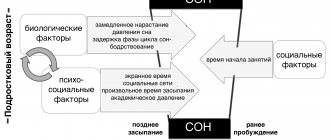.
The physical ability of crying is a useful skill for the first years of life. A person provokes his loved ones by sobbing and attracts their attention. For an adult, tears help to express emotions and ease mental well-being. But everything should be in moderation. It is advisable to stop in a timely manner. To do this, you need to know how to stop crying in order to take care of yourself. Intense sobbing and hysteria with tears can provoke a rapid heart rate, which contributes to increased blood pressure.
Crying is sometimes hard to stop
It happens that sobs need to be hidden. But if tears blur your eyes and burst out, you should use physiological and mental tricks to quickly stop crying.
Factors causing crying
You need to think about the source of the crying. If a person notices the systematic manifestation of tears, then this may signal deep problems. It is worth finding the reasons that contribute to crying:
- you can capture this on the paper of a personal diary: a person can record and then analyze his negative thoughts;
- some people start crying because of music, photographs - in this case it is rational to remove these things out of sight;
- It is worth doing an analysis of your personal reaction to quarrels and bickering: if you boycott scandals and discord, you will be able to avoid the moment of resentment and tears;
- You need to keep your emotions under control: you should behave more energetically and be the master of your life.
A person makes someone guilty: he becomes angry with a teacher for a bad grade, he is offended by his parents or a friend for misunderstanding, and negativity appears after breaking up with a boyfriend or girlfriend. You shouldn’t shift responsibility, then you won’t have to shed tears. Emotions and thoughts can influence actions and actions.
Negative emotions and thoughts destroy a person’s inner world. Systematic irritation contributes to the development of fears and nervous breakdowns, stress and uncertainty in loved ones. Have you ever wondered whether crying is good for you when you're stressed? This is often necessary because low mood and crying can lead to prolonged depression. If a person is forced to cry by some situations from the past, it is necessary to realize that the past is unchanged, it is better to think about real events.
Have a heart-to-heart talk with friends
In order to stop crying for any reason, you should have a heart-to-heart talk with a loved one. This helps to rethink the worldview. There are also psychological help services. You can seek the help of a specialist who will help you stop crying every day and prevent mental anguish. If the situation is critical, you can seek help from a knowledgeable specialist in the field of psychology.
The doctor will determine the factors behind crying and recommend how to quickly calm down and keep emotions under control.
Tears and tears are different
Tear is a liquid that mainly consists of water, sodium chloride and potassium and is produced in the body by special glands. There are three types of tears: basal - they are secreted to wet the eyes; reflexive - appear in response to external stimuli such as a speck of dirt caught in the eye or onion fumes - and emotional, based on psychological reasons. We will talk about the latter in this material.
Emotional tears are what distinguishes humans from other living organisms. Crocodiles, elephants and some other animals also cry, but this has nothing to do with mental experiences.
Scientists have yet to figure out the exact reasons why people cry emotionally, but the most common version is another social mechanism. With the help of crying and accompanying facial expressions, a person communicates something to others. The attitude towards sobs and emotions in general differs in different cultures: for some peoples, publicly expressing their feelings is the norm, for others it is customary to restrain oneself and hide behind cold politeness.
Physiological methods
A person can cry over little things, but not everyone knows how to prevent it. There are people who are so emotional that their mood changes at any sensitive moment. In this case, it is worth trying methods that will help you stop crying.
- Blinking frequently or not blinking at all. For some people, frequent blinking or lack thereof, as well as opening their eyes to their full width, causes tears. When the muscles are tense and the eyes are wide open, they stop the flow of tears.
- Smile. To stop being sad, you can laugh out loud. This has a positive effect on the entire body. Laughter eliminates irritation, dissatisfaction and prevents the occurrence of nervous tension. You can go through comical, funny and amusing situations in your memory or see something funny on the side.
- You can stop the flow of tears by squeezing your nose. The source of this method is physiological patterns: the tear ducts run from the bottom of the eyes to the nose.
- Muscle relaxation. Tearfulness is caused by prolonged nervous overstrain and neuroses. The following exercises will help you unload. You can start by tensing and weakening the muscles of your toes, gradually moving to your ankles, and then your pelvic muscles. And follow further, right up to the head. This must be done alternately for 30 seconds. This method also helps solve sleep problems.
- Painful sensations. You can try to distract yourself from crying by causing yourself minor discomfort. Pinch, pull hair. This distracting action is suitable if there are no traces left on the body. You shouldn't engage in tyranny.
- Control over the body. If the approach of tears is close, move. Walk, stretch your fists. This is sometimes enough to stop crying. Great effort is required to control the body.
- Retreat. In order to stop crying when you are shouted at, you can leave the place of conflict to prevent the manifestation of emotions. Once your peace of mind is restored, you can resume the conversation.
Why do you always want to cry?
Children cry often and are not shy; this is their way of attracting attention, demanding a desired toy, or influencing a parent’s decision. Adults rarely allow themselves to cry in the presence of other people, but sometimes in this way they express pain, resentment, empathy Sympathy Crying: Insights from Infrared Thermal Imaging on a Female Sample, fatigue, stress, or, conversely, joy.
If crying does not appear every day and over trifles, you can ignore it. But imagine a situation where tears flow because of a broken nail, a small remark from a stranger, or for no apparent reason at all. Perhaps the problem is a lack of vitamin Vitamin B‑12 and depression: Are they related? B12, fatigue. But sometimes a constant desire to cry is the influence of various pathological factors that are difficult to eliminate without a doctor.
Psychological factors
Instability of the nervous system appears in people who are in a state of nervous tension for a long time. At the same time, the hormones adrenaline, norepinephrine and cortisol are released, which deplete the body. Crying helps Sympathy Crying: Insights from Infrared Thermal Imaging on a Female Sample reduce the release of these substances and reduce the impact of stress on the psyche.
Sometimes the desire to cry constantly arises due to a violation of Medical psychology adaptation to the action of various factors. For example, psychological pressure at work, lack of money or a large number of responsibilities to loved ones exhaust the nervous system, irritation and fatigue accumulate. Therefore, for any insignificant reason, tears appear. This disorder can last up to 2-3 months and does not always go away without the help of a psychologist.
Mental disorders
A constant desire to cry occurs with mental disorders. They often have subtle symptoms, so it is impossible to make a diagnosis without consulting a psychiatrist. After examination, the doctor may find one of the following diseases:
- Depression (major depressive disorder). Patients are in an emotionally depressed state, but sadness and tearfulness can be replaced by aggression and irritability. A person loses all interest in life, his favorite hobbies, his mental activity slows down, and his memory decreases. In severe cases, thoughts of suicide or attempts to carry it out appear.
- Post-traumatic stress disorder. The condition occurs Post‑traumatic stress disorder (PTSD) after a mentally traumatic event, but usually not immediately, but several weeks later. A person is tormented by nightmares, unpleasant memories, sometimes thoughts of his own worthlessness and a feeling of doom appear. Positive emotions are erased. Sometimes this disorder can also lead to suicide.
- Panic attacks and panic disorder disorder. This is a mental illness in which a sudden attack of fear appears, a person loses control over his behavior, feels a loud heartbeat, shortness of breath, trembling, and abdominal cramps. Many people start crying at this.
- Dementia Dementia. The disease often occurs in old age and leads to a decrease in memory, attention, and thinking. A person’s emotions are erased, but there is a desire to cry constantly.
Changes in internal organs
A frequent desire to shed tears may occur due to hormonal changes or illnesses and be accompanied by additional symptoms. For example, in women, tearfulness is associated with premenstrual syndrome, menopause, or pregnancy. Psychoemotional disorders during pregnancy. The need for their correction. These conditions are accompanied by fluctuations in the level of sex hormones, and therefore can lead to emotional instability.
Doctors believe that endocrine diseases also cause constant crying. For example, with hyperthyroidism Hyperthyroidism (overactive thyroid), Addison's disease, diabetes mellitus Depression and diabetes mellitus as comorbid diseases, there is a tendency to depression and mood swings.
But more often than not, tears for no reason provoke brain pathologies. Sometimes a person experiences uncontrollable crying, which can be replaced by laughter. This is one of the signs of pseudobulbar affect. Some consider it a mental disorder, but in fact it is caused by diseases of the brain:
- stroke;
- multiple sclerosis;
- consequences of head injury;
- Alzheimer's disease;
- Parkinson's disease.
Psychological methods
There are certain ways that will help you stop feeling sorry for yourself and crying over little things.
- Leave for later. Whenever you want to cry, you should try to postpone this idea. Even if it is difficult to do, you must try to normalize your mental balance. Concentration is important. It is necessary to mentally gather yourself in order to overcome the tears that have come. Do not forget that the absence of crying is generally impossible. Systematic suppression of tears contributes to mental disorders and breakdowns. You can resort to something that can distract you: watch a funny video on the Internet, count examples.
- Meditation. In this case, it is not necessary to go deep into yoga; you can study several methods, namely: you should retire, position yourself so that it is comfortable, close your eyes and breathe in and out slowly and deeply.
- Put it on paper. You can write about what upsets you and makes you cry. This method is equivalent to a heart-to-heart conversation with a friend.
- Gratitude. Many times a person may want to cry because of problems on the personal front. In this case, you need to think about past negative situations and stop feeling sorry for yourself. It is worth understanding that more serious problems were experienced. Don’t forget to thank fate and God for the good moments in life.
Theories of crying
Elephants, seals, otters and, of course, crocodiles can shed tears. True, for them this is a way to get rid of excess salt in the body without any sentimentality. When it comes to human crying, there are many theories about its origin. According to one of the ancients (XVI-XVII centuries), it was believed that when emotions heat up the heart, the body produces steam to cool it down. It turned out that tears are something like a condensation of emotional steam that accumulates between the eyes and the brain when our pot begins to boil.
This was believed until the Danish anatomist Niels Stensen discovered the lacrimal gland in 1662 - however, the image was firmly entrenched in the collective consciousness and largely influenced Freud’s ideas about catharsis. And in the 80s of the last century, researcher William Frey discovered a protein in emotional tears and suggested that tears remove toxic substances formed during stress. Since then, there has been no research to support this idea, and yet it still seems plausible to many.
Today, scientists do not see a direct relationship between the number of tears shed and the level of stress. A study of the dependence of mood on tears conducted by Dutch scientists did not give entirely clear results. Subjects were shown sad films, and those who did not cry while watching them reported stable moods both before watching and 20 and 90 minutes after. Those who cried felt much worse after watching, but reported an improvement in their mood as time passed. Such an assessment is subjective, therefore it is impossible to say whether the emotional state has really improved or whether it is a matter of banal contrast.











